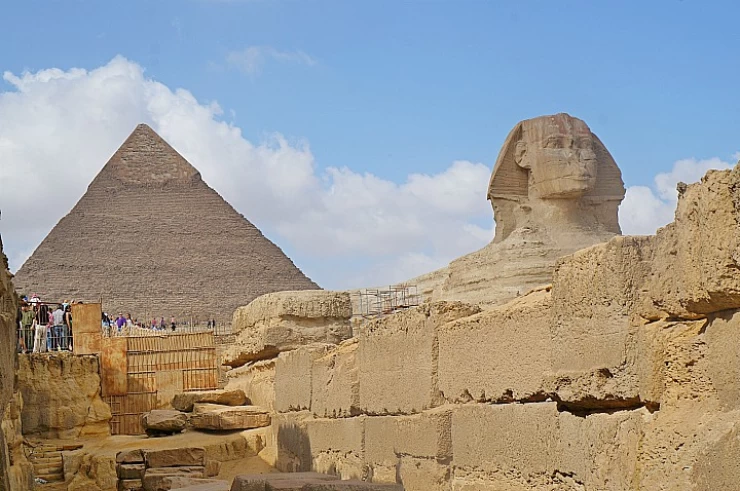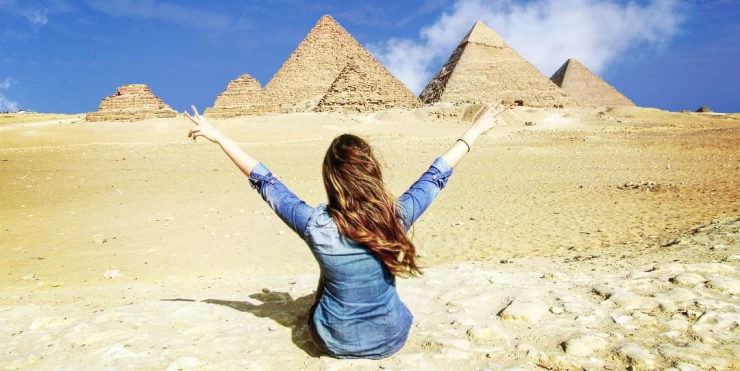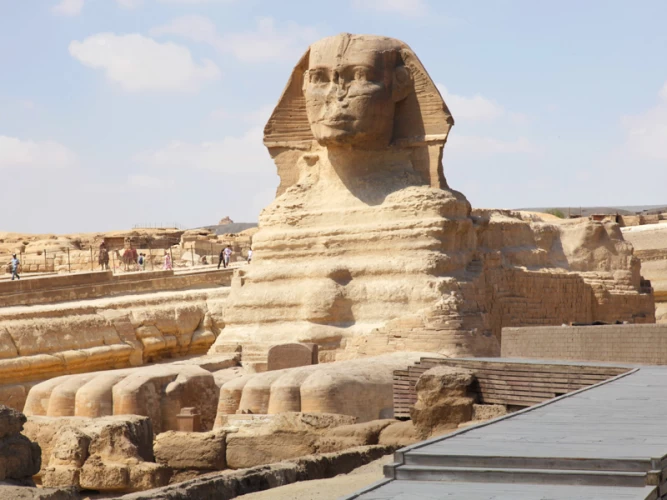
King Snefru | Founder of the Fourth Dynasty
Really, when one speaks of King Snefru, the founder of the 4th dynasty, the mention of the construction of three, if not four, pyramids suffices. Termed the greatest builder of Ancient Egypt, he indeed built monuments of magnificence that tell of his reign even when little is revealed by history.
This is the son of Huni, the last ruler of the 3rd dynasty, and Queen Meresankh, whose second husband was King Huni. To lay a stronger claim to the throne, Snefru married his half sister. She later became the mother of Queen Hetepheres, who bore Cheops (Khufu), the most renowned king of ancient Egyptian history and the builder of the Great Pyramid of Giza, which continues to attract countless tourists on the Giza Pyramids tour.
The Palermo Stone tells of two military campaigns, one against Nubia and another against the Libyan tribes, during Snefru's reign.
The two pyramids at Dahshur, near Saqqara, are attributed to King Snefru, while the pyramid of Meidum remains a subject of debate. According to a widely accepted theory, the Meidum pyramid originally belonged to his father, Huni, but Snefru transformed it. During his reign, the cartouche—a distinctive oval enclosing the king’s name—appeared for the first time, replacing the traditional serekh, a square design previously used. The serekh can still be seen on the Narmer Palette, displayed in the Egyptian Museum in Cairo, which commemorates King Menes’ victory unifying Upper and Lower Egypt and marking the beginning of the dynastic period with the 1st dynasty.
Reigning for approximately fifty years, Snefru had the time to construct and complete three monumental pyramids, earning the title "the greatest pyramid builder of all time." These structures, collectively containing over three and a half million cubic meters of stone, surpass the volume of the Great Pyramid of Giza. While it may seem unusual for a king to have multiple tombs, this might be explained by the technical challenges faced during the construction of his earlier pyramids, prompting him to build a third in perfect form.
This approach contrasts with that of Imhotep, who constructed King Djoser’s Step Pyramid incrementally to ensure a tomb was always ready in case of the pharaoh’s sudden demise. A similar situation occurred in the Middle Kingdom when Amenemhat III built two pyramids, with the second being technically superior to the first. It is also possible that Snefru desired multiple memorials in addition to his primary tomb.
The Bent Pyramid, also known as the Rhomboid Pyramid or South Pyramid of Dahshur, stands as a testament to Snefru’s architectural ambition. Located 40 kilometers south of Cairo, this funerary monument remains a must-see for those exploring Egypt's pharaonic treasures.
King Snefru prioritized the security of Egypt's borders by launching campaigns against Nubian tribes to stabilize the southern frontier. He also conducted punitive attacks on the Bedouins of Sinai, who were notorious for plundering turquoise and copper mines and trade caravans. His military endeavors reflect his commitment to maintaining Egypt’s stability, further exemplified by the fortresses he constructed.
For history enthusiasts, a visit to Egypt offers a chance to experience these incredible legacies firsthand. With Cairo Top Tours, you can explore the colossal pyramids of Saqqara and Dahshur on a pyramids tour from Cairo Airport and discover the treasures of this captivating ancient civilization.
Really, when one speaks of King Snefru, the founder of the 4th dynasty, the mention of the construction of three, if not four, pyramids suffices. Termed the greatest builder of Ancient Egypt, he indeed built monuments of magnificence that tell of his reign even when little is revealed by history.
This is the son of Huni, the last ruler of the 3rd dynasty, and Queen Meresankh, whose second husband was King Huni. To lay a stronger claim to the throne, Snefru married his half sister. She later became the mother of Queen Hetepheres, who bore Cheops (Khufu), the most renowned king of ancient Egyptian history and the builder of the Great Pyramid of Giza, which continues to attract countless tourists on the Giza Pyramids tour.
The two pyramids at Dahshur, near Saqqara, are attributed to King Snefru, while the pyramid of Meidum remains a subject of debate. According to a widely accepted theory, the Meidum pyramid originally belonged to his father, Huni, but Snefru transformed it. During his reign, the cartouche—a distinctive oval enclosing the king’s name—appeared for the first time, replacing the traditional serekh, a square design previously used. The serekh can still be seen on the Narmer Palette, displayed in the Egyptian Museum in Cairo, which commemorates King Menes’ victory unifying Upper and Lower Egypt and marking the beginning of the dynastic period with the 1st dynasty.
Reigning for approximately fifty years, Snefru had the time to construct and complete three monumental pyramids, earning the title "the greatest pyramid builder of all time." These structures, collectively containing over three and a half million cubic meters of stone, surpass the volume of the Great Pyramid of Giza. While it may seem unusual for a king to have multiple tombs, this might be explained by the technical challenges faced during the construction of his earlier pyramids, prompting him to build a third in perfect form.
This approach contrasts with that of Imhotep, who constructed King Djoser’s Step Pyramid incrementally to ensure a tomb was always ready in case of the pharaoh’s sudden demise. A similar situation occurred in the Middle Kingdom when Amenemhat III built two pyramids, with the second being technically superior to the first. It is also possible that Snefru desired multiple memorials in addition to his primary tomb.


















